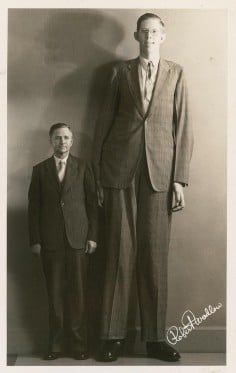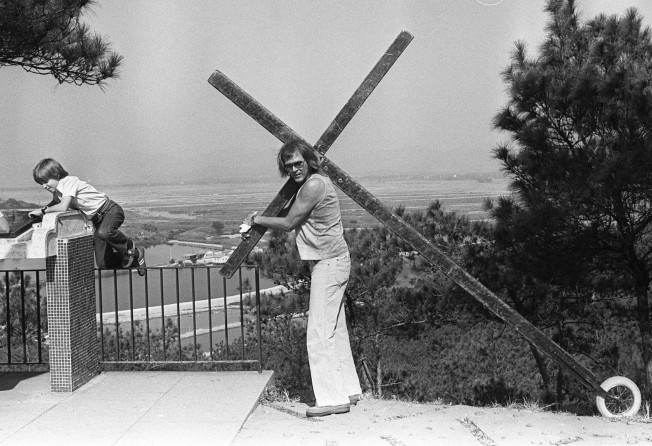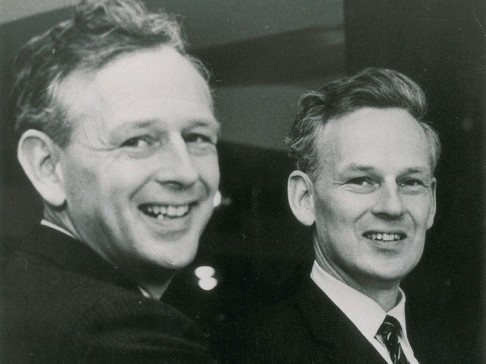
Guinness World Records: 60 years of inspiring the extraordinary
Since 1955, Guinness World Records has been chronicling human achievement in the best-selling copyrighted book of all time


How about a book that solves such riddles, Beaver pondered, one that might go a long way towards ending the arguments you hear around the bar about what's the biggest, the fastest, the tallest.
Incredible, really, that no one had thought of it before, but here we are, with August 27 marking the 60th anniversary of the first publication of what has since 1998 been known as Guinness World Records. That first edition was pieced together by sports journalists Norris and Ross McWhirter, and the GWR organisation has since expanded its reach into television, publishing and even "bespoke record campaigns" as bonding and promotional exercises for businesses, with the aim all along of inspiring "ordinary people to do extraordinary things".
The book (formerly known as The Guinness Book of Records) has become "the bestselling copyrighted title of all time" with more than 130 million copies shifted in more than 100 countries - and people continue to use its pages to settle arguments while dreaming of setting a few records of their own.
"It's the idea of information and knowing about the world," says Blythe Fitzwiliam, commercial director of Guinness World Records Greater China, when asked to explain why the book has been so popular.

"I think people are fascinated about the world, about different cultures and about things they don't know. It's a very human thing to compare ourselves to others. It's not specific to one country and I think that is just one of the reasons the book has been so successful."
Another reason is the thing is just so interesting. While GWR has certainly moved with our more enlightened times - long gone are the days when the publication included records for such things as "unfettered gluttony" or "fattest cat" - there is certainly still a sideshow appeal to some of the weird and wonderful things it lists, and there's pure admiration for feats that sometimes seem beyond belief.
And then there are those records of physical attributes that can't be imitated, such as Robert Pershing Wadlow's record as the world's tallest man. He stood 272cm (that's eight foot, 11.1 inches) and lived from 1918 until 1940, a time when the average man was 168cm tall. The tallest man currently living is Sultan Kösen of Turkey, who stands at 251cm (eight foot, three inches) - seen on the cover of The Review alongside the shortest living man, Chandra Bahadur Dangi of Nepal, who measures 54.6cm (21½ inches).
The great Wadlow still stares at us from the pages of each edition of GWR, as he did from the first, trapped in time, happy in the knowledge perhaps that no man might ever again reach such heights.

Ludlow's life would be brought to an end at the age of 22 when a blister caused by a poorly fitted brace on his right ankle turned septic. The big man was buried in a 3.28-metre coffin at the Oakwood Cemetery in Alton, Illinois.
People are fascinated about the world, about different cultures and about things they don’t know
Or what of Arthur Blessitt? He's been appearing in GWR for years as he continues to extend the record for the longest ongoing pilgrimage. By April 24, 2013, Blessitt had covered 64,752km - more than 1.5 times the circumference of the earth - since setting out on Christmas Day, 1969, from Los Angeles, all the while lugging a 3.7-metre wooden cross with him, along with his Christian faith. He has passed through "323 nations, island groups, and territories" on his travels.
This makes Cherry Yoshitake's record for "most nuts crushed by sitting down in 30 seconds" seem a little easy, even though he managed to crush 48 walnuts "using his buttocks", the good book tells us, in Kawasaki, Japan, on January 15, 2013.
Some of history's great self-promoters have also found their way into GWR's pages. Virgin mogul Richard Branson, never one to shy away from the limelight, made headlines when the 2014 edition was released for holding records for the oldest person to cross the English Channel by kiteboard, the richest presenter of reality television and for having the most followers on LinkedIn.


Our very own Jackie Chan also rates a mention for having the most credits in one movie and for being the living actor who has performed the most stunts.
But more often it's regular people who set the records, either for a splash of personal glory or in pursuit of the greater good. The creation in Taiwan of the most pop-ups in a pop-up book was an example of the latter, Fitzwiliam says.
"The people of greater Taichung spent six months to a year, involving students from the whole community, and the book tells a story about their town, why they are proud of it, and why people should visit it," she says.
"It's an example of how the GWR can help people tell the world that we're here, and we're doing amazing things."

If you're thinking of having a crack at a record yourself, know first that GWR receives more than 1,000 applications and suggestions per week, and of these only about 5 per cent end up with an official title as a Guinness World Record. The applicant covers all costs, and the GWR adjudicator decides whether or not the record has been achieved.
And if you're wondering about the argument that got the whole thing started, the GWR tells us that it has only just now been resolved. Previously, the book only concerned itself with United Kingdom and world records - not European.
So to finally answer the question, GWR called on famed British zoologist Dr Karl Shuker, who found the record for fastest game bird in Europe should be jointly held by the red-breasted merganser ( Mergus serrator) and the common eider duck ( Somateria mollissima), as both birds can "probably exceed an air speed of 104km/h [65mph]".
World records that Hongkongers can call their own

Noise? What noise? The largest percussion performance in history was staged at the Hong Kong Coliseum on July 2, 2002, when 10,102 people banged away for more than six minutes on an assortment of triangles, hand drums, guiros, maracas, Chocalho de Platinelas and (not to be forgotten) cowbells.
Dutch treat: the record for the most people skipping double Dutch style on the same rope is 46 and it was set on April 14, 2013, thanks to the efforts of Hong Kong Ngong Ping 360 Ltd and Hong Kong Rope Skipping Academy.
Fashion statement: to set the mark for most models in a fashion show, the Hong Kong Fashion Designers Association gathered together 343 catwalk strutters for its “World’s Greatest Catwalk” event at the Tsim Sha Tsui Promenade on December 9, 2012 – and sent them down a 1.6km runway.

Point taken: steady hands were the order of the day when 1,051people gathered at the Tin Fai Road Sports Centre’s multipurpose arena on November 22, 2014, and they were each handed a needle, some thread and material on which to embroider. The result was the record set for the most people embroidering simultaneously – they went for 20 minutes and 29 seconds, and the record rests with the organisers Tin Shui Wai Residents Services Association Fund Committee and CLP Power Hong Kong.
Pass the juice: on June 28, 2002, 5,495kg of multigrain bread, 162,000kg of bananas, 11,000 litres of orange juice and 22,897 litres of highcalcium soya milk were consumed at 144 venues across Hong Kong, by 91,591hungry souls who set the record for the largest continental breakfast (attendance) – multiple venues. It was all organised by The Centre for Health Education and Health Promotion, part of The Chinese University of Hong Kong.
Fast fingers: the record for the most people transcribing texts simultaneously was 6,106, set at Hong Kong Coliseum on October 4, 2014, by people from the Sik Sik Yuen temple. However, the record for the most people sending a text message simultaneously is just 2,193 (set by the US National Speech & Debate Association in Overland Park, Kansas, on June 19, 2014). Come on Hong Kong, that’s like two carriages of people during rush hour on the MTR. We need to set this record straight.